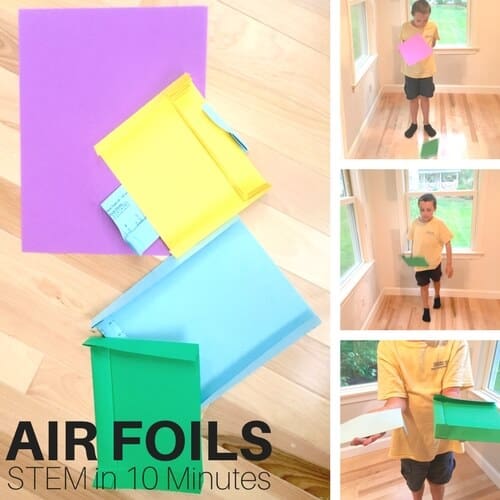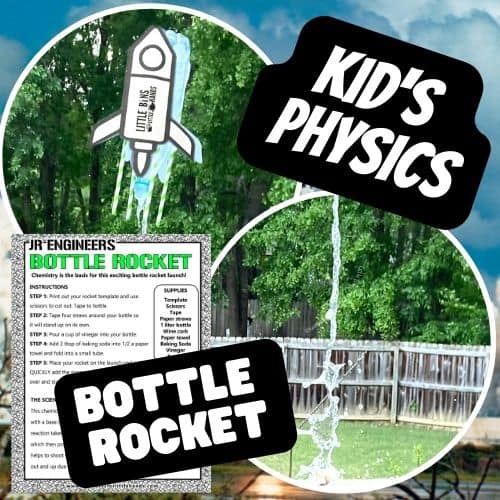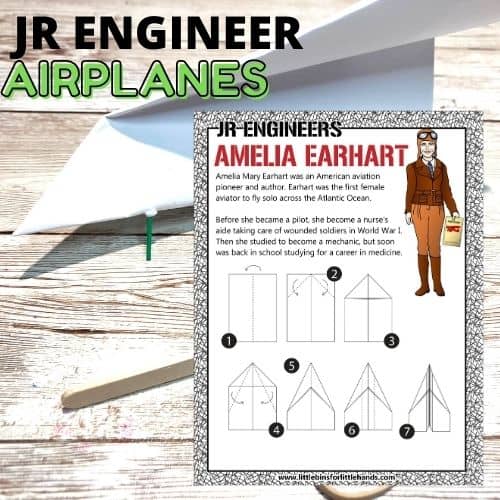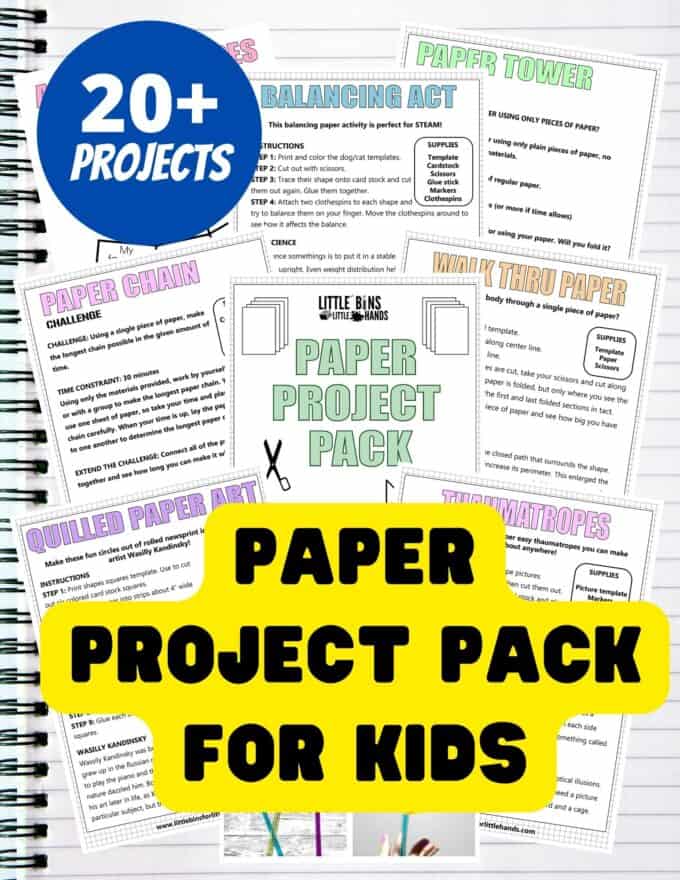Kids will love making this simple paper rocket activity using our free rocket template and a straw. Add this simple project to your list of science experiments and learn a little bit about physics with gravity, propulsion, energy, and aerodynamics while having a blast! Easy paper STEM activities make learning fun and STEM accessible for every kid, group, and classroom!

How to Make a Paper Rocket
Get set to explore cool physics with hands-on learning that feels more like playtime! Kids will love making paper rockets to blast off indoors or out making it the perfect rainy day, screen-free activity as well. Let’s get started with the free paper rocket template below. It also comes with a bonus DIY pinwheel template for even more fun.
Make sure to check out all our paper STEM activities here!
Watch the Video:
Supplies:
- Paper Rocket Template
- Straw
- Coloring Utensils
- Scissors and Tape

Instructions:
STEP 1: Gather all the materials you’ll need to make the paper rocket: the rocket-shaped template, rectangular, square template, tape, and a straw. If you would like to create a custom paper rocket, triangular pieces to use as fins are provided.
STEP 2: You can choose the size of the rectangular square template you want to use for your rocket body from the three sizes provided. You can test each size as a science experiment variable!
STEP 3: Carefully cut out the rocket-shaped and rectangular square templates along the outer edges. Color as desired!

STEP 4: Roll the rectangular, square template into a tube to form the rocket’s body. Make sure to roll it tightly and evenly. Use your straw as a guide to help roll the body, as it must fit snugly onto the straw (not too loose or too tight).
Use pieces of tape to secure the rolled tube in place. You can add tape along the seam of the tube to ensure it stays closed and maintains its shape.

STEP 6: Place the rocket-shaped template flat on a surface. Then, position the rolled tube (rocket body) onto the rocket-shaped template, align it with the body outline on the template, and tape it securely.
STEP 7: Roll the pointed end of the rocket-shaped template to form the nose cone of the rocket. Secure it with tape to maintain its shape.
STEP 8: Take the straw and insert it into the bottom end of the rocket, ensuring it fits snugly.

Launch Your Rocket: With the rocket complete, place the straw in your mouth and blow air through it to launch the paper rocket into the air. Experiment with the angle and force of your breath to see how it affects the rocket’s flight.
Simple Paper Rocket Science
This paper rocket and straw activity provides a hands-on way for kids to explore fundamental concepts in physics while having fun launching their creations into the air. It encourages experimentation and observation, fostering curiosity and critical thinking skills.
This simple rocket activity is also fun to demonstrate basic physics principles, such as propulsion, aerodynamics, and Newton’s third law of motion. Here’s a breakdown of the science behind it:
Propulsion:
When you blow through the straw, you create a stream of fast-moving air. According to Newton’s third law of motion, there is an equal and opposite reaction for every action. So, as you blow air out of the straw, the air exerts a force backward on you (the action), and you experience a force pushing you forward (the reaction). This is similar to how a rocket engine works by expelling fuel from the back, creating thrust that propels the rocket forward.
Another example of this is our Balloon Rocket demonstration!
Aerodynamics:
The shape of the paper rocket is designed to be aerodynamic, meaning it’s optimized to minimize air resistance (drag) and maximize lift. The pointed nose cone helps reduce drag by allowing air to flow smoothly around the rocket, while the fins at the back help stabilize its flight and prevent it from spinning out of control. This demonstrates the importance of aerodynamic design in real rockets and aircraft.
Build a space shuttle with Mae Jemison here.
Forces in Flight:
Once you launch the paper rocket, several forces act on it as it flies through the air. Gravity pulls the rocket downward while the air exerts a force of drag in the opposite direction of its motion. The rocket’s fins help keep it stable by counteracting any tendency to veer off course. By adjusting the angle and force of your breath, you can experiment with how these forces affect the rocket’s trajectory.
Learn more about gravity here and find more fun gravity experiments to try.
Energy Conservation:
The energy you provide by blowing through the straw is converted into kinetic energy as the rocket accelerates through the air. This energy is then gradually dissipated as the rocket slows down due to drag and gravity, eventually causing it to fall back to the ground. This demonstrates the principle of energy conservation, which states that energy cannot be created or destroyed, only transformed from one form to another.
Learn more about the different types of energy here and a grab a free printable activity.
More Fun Flying Physics Activities
Set up more fun physics activities that explore propulsion, gravity, and energy!
- DIY Helicopter
- Air Foils
- Bottle Rocket
- Balloon Rocket
- Airplanes and Launcher
- Build a Windmill
- Make a Kite
- Spring Paper Frog






Printable Paper Project Pack
The main ingredient is paper! Our 20+ Fantastic boredom buster activities pack is a resource that doesn’t require a huge time commitment or expensive supplies to complete. That means you can start today. Scissors, tape or glue, markers, pencils… that’s about all you need for most of the projects.
- Do kids need a break from screen time?
- Need a quick STEM challenge?
- Looking for something a little different to do today?
- Want to send a quick (budget-friendly) activity home with your students?
Paper is generally a supply that is common in most classrooms and households. You can even grab the junk mail for some of the projects. Don’t have a printer? Make your own versions instead!
This pack is an awesome way to get creative with what you have!
Each activity includes:
- Templates (if needed)
- Step by step instructions
- Picture grids
- Supplies List









